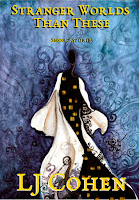 |
| Mya, soaking up the sun |
There was a time when I was able to write 1000 words a day/5000 words a week on whatever project I was working on. I did this for years, writing a novel a year from 2004 until 2016 or thereabouts.
Somewhere, after writing and publishing A STAR IN THE VOID, the 5th and final of the Halcyone Space novels, I hit a wall. I started projects, ground to a halt, abandoned them. Every day, I would dutifully sit at my laptop, stare at a blank page, and then click away to facebook or twitter and fritter away hours. When I look back at that time, I can see that there were a number of things at play. The political landscape was such that I felt I had to be hyper-vigilant at all times just to feel any sort of control over my life. I know it doesn't make sense - immersing myself in the constant churn of news only increased my anxiety, which is not conducive to creativity.
And then covid hit. My physician spouse sent me away to our farm in Central Massachusetts while he stayed in Boston on the front lines of treating ICU patients. I was isolated and depressed. Desperately worried about my spouse's health, physical and mental. Also not conducive to creativity.
I know a lot of my writer friends were able to channel their anxiety into their work. I was not one of them.
What I did instead was a lot of yarn work - knitting and crocheting baby blankets to donate to a hospital - while watching a lot of television. When I did write, it was mainly poetry. I had an idea for a novel, but it seemed I was only able to write myself into dead ends. Several years worth of them. I think I discarded at least as many words as I kept for what became LITANY FOR A BROKEN WORLD.
Ultimately, with the help of my writing community and several zoom sessions a week of co-writing, I was able to finish the draft of LITANY after more than 5 years of struggling. That manuscript is in the hands of my editor now and I'm working on the sequel.
I'm almost ashamed to say that I'm only working on it once a week. I have a scheduled zoom write-in with Broad Universe on Tuesday mornings. When I write, the writing is going well - I have a solid sense of the conflicts in the story and a hazy view of the ending. But writing 500-1000 words a week is less than optimal. Not only because drafting the novel is going to take a long time, but also because I lose momentum and have to backtrack every time I sit down to write.
I realize my hyperfocus on wordcount in the past may have generated a lot of writing, but it wasn't great for my mental health and life balance. Writing only once a week isn't great for my sense of identity as a writer or my goals. So I need to find a middle ground.
Part of finding that balance was getting away from social media and returning to somewhat regular blogging. Sitting down to create a blogpost is the equivalent of morning pages - it primes the pump for my other writing. I've also tentatively scheduled two additional writing times in my week. I'm hoping that as I find my discipline again, it will be self reinforcing.
But life does keep intruding. The political scene is still fraught. And on a personal note, one of my dogs has a developing and as yet undiagnosed medical problem. I'm a person with very porous emotional filters. It's part of who I am and if I could change it, I'm not sure I would. But it does make it difficult to set all the external worries aside and focus. (Which is what I did for years. Until I experienced burn-out.)
So now, I'm trying another path. Where I acknowledge the outside concerns instead of cutting myself off from them, using them as fuel/energy to do creative work.
Life and art are messy. I'm not sure there's any way around that.
Subscribe to BlueMusings and receive my short story collection, STRANGER WORLDS THAN THESE, as my gift.







